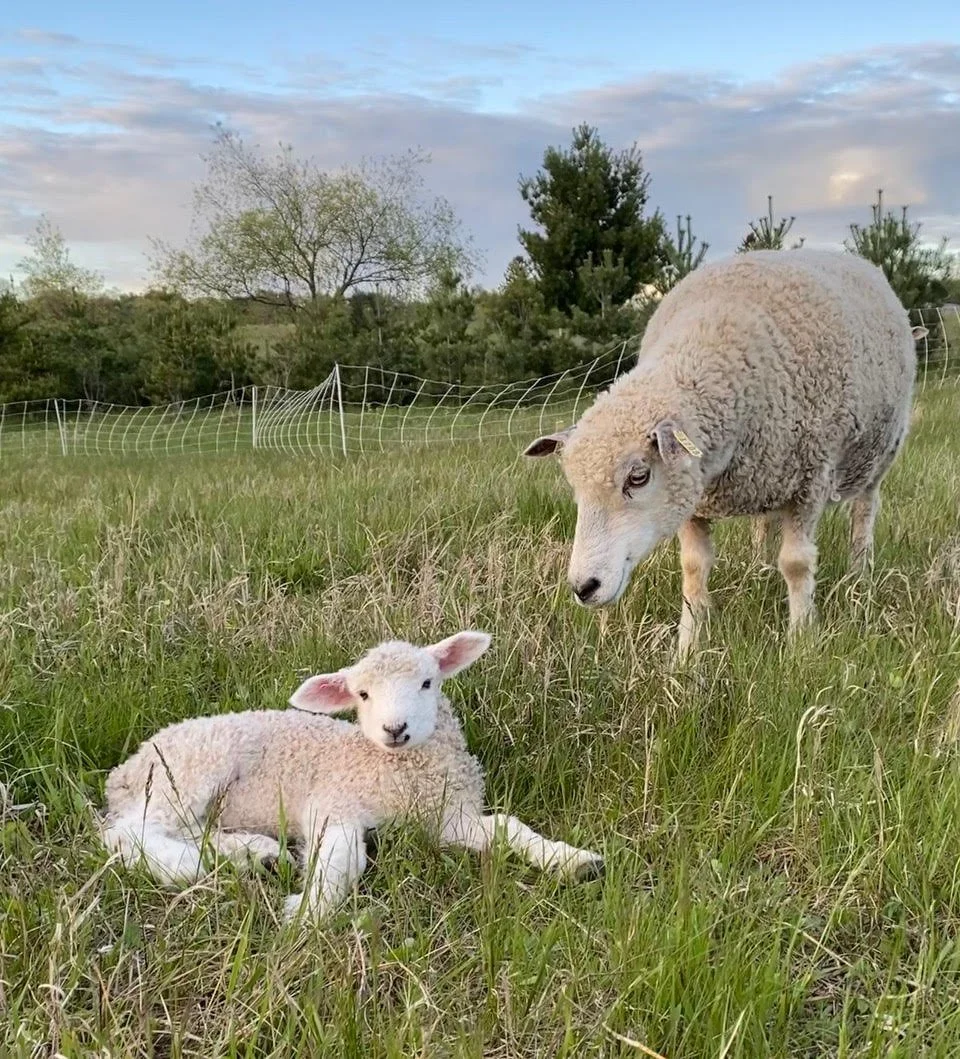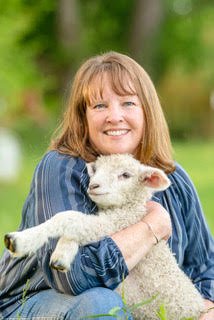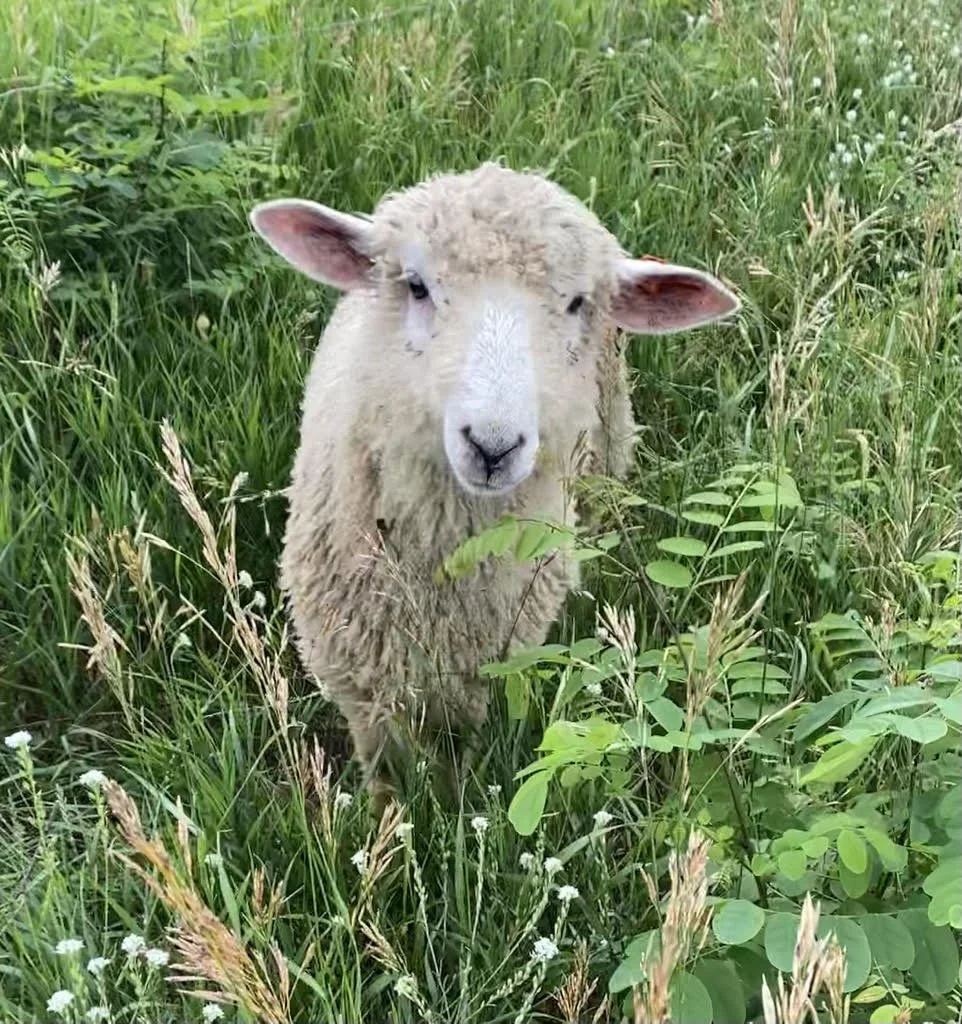written by Phoebe Eisenbeis
How did you get into farming and herding? What was your journey to this moment now?
In 2017, the 40 acres next to our rural home became available for purchase. My husband and I felt that purchasing this land would help protect our local watershed. We were both born and raised in cities, we really had no idea what we could do with the land and started asking everyone we could find a lot of questions. Every farmer we met said the following, “It’s really good grazing land, you should get some cows.” I thought cows seemed a bit big!
Goats and sheep were the next suggestions for our land. Their sizes seemed more manageable and they would still meet our environmental goals of protecting the watershed. Sheep on pasture would help improve the pasture and soil and eat down all of the invasives growing on the land. I took a weekend “Introduction to shepherding class” to see what was involved with raising sheep put on by a member of the Fibershed. Through the shepherding class I learned about the Fibershed, the “soil to soil”concept, and from there attended a few other group learning events. These events were filled with wonderful shepherds and after hearing their stories, I started looking for a sheep breed.
We bought our first four Cotswold sheep in 2018. My husband and I made a pact that we would check in with each other every six months to see how we were feeling about livestock just to make sure we both like it and we love it!
And then there is the fiber end of sheep, I hadn’t thought about that when we first bought the ewes. I’ve always been crafty and I’ve loved learning about the whole process of making yarn from growing it to washing, carding, dyeing, and then weaving it. It's really been a fun journey from start to finish.
Why or how did you choose your specific fiber animal and what is something unique about them?
We raise Cotswold sheep. At the time we bought them, I wasn’t even thinking about fiber. I kept coming back to pictures of their adorable lambs. We were focused on finding a sheep that would be hardy enough for our set up. They needed to be outside 24/7 and do well eating lower quality grasses; at the time our pastures weren’t very good. The Cotswolds are just hardy, lovely sheep. They are such good mothers and easy lambers. Over the centuries they have been called gentle giants, the ewes can run anywhere from 170-200lbs and the rams are about 250lbs or more. They all have sweet personalities which I really love about this breed.
They are also really versatile, having both great wool and a mild meat. The Cotswolds have been used as the base for many upbreeding programs for different sheep breeds such as the Valais and Teeswater sheep. Cotswolds have a fun history in both the UK and the US. Their long wool is lovely to spin, it’s super strong, good for natural dying and has a beautiful luster to it. And the lambs are super cute, there’s nothing cuter than a Cotswold lamb although I know some shepherds in the Fibershed might not agree with me on this…
How do you align with the Fibershed?
I love the soil to soil concept of the Fibershed. It’s also so doable. The concept can be applied to more than where fiber comes from, such as our food supplies and our watersheds. It all builds on each other.
If everyone took more time to think about where the fibers they wear come from or the animals or plants that grow the fibers, where those fibers are being produced, how they are being made into clothing, this world would be in a much better place. That is the part that really spoke to me. We’re just caretakers of this earth. Whatever we can do, whether it’s what we wear or what we put in our bodies, how those things are grown and raised is really important.
What does a typical day at your farm look like?
Seasonally it changes but every day involves taking care of our sheep. In the summer, we rotationally graze our sheep which means I’m moving them to a different pasture about every 3 days. We do this for plant health and animal health but also to help with parasite issues.
Rotational grazing is one really good way to break the parasite cycle and keep healthy sheep without the use of medications. Resistance to anti-parasitic medications is happening across the country. Anything we can do to decrease the use of medications in our animals will really help keep these medications around for when we really need them.
Every year we are figuring out how to best manage our flock as it grows. This summer we are installing internal fences to make moves for rotational grazing go faster. We also just bought a manure spreader which I never thought I’d be so excited about! We also lambed a month earlier this year than previous years. That time change led to many new changes on the farm. We are always learning!
What is your favorite part of doing this work?
My favorite time of year is lambing. There’s nothing better than watching a ewe give birth to one lamb and while she’s cleaning it off, she’s having another. When she’s cleaning off the second one, she’s nudging the first to nurse. It's a miracle every time I see it.
On the wool end of things there’s so much to learn and try. I love growing plants and using them as natural dyes. As a pharmacist I always had to be precise and in the fiber world you can be precise but you can also just have fun. You can put leaves in a glass jar with some water and see what color comes up!You can get into all the chemistry, which I enjoy, but you don’t have to! You can try things out and see what happens. Usually it all turns out beautiful but if you don’t like it you can overdye it. There’s just no end to the creativity and I wish I had more time to try it all.
What does processing the fiber look like for you?
I try to process one or two fleeces myself to help answer customer’s questions if they want to know how I do it. I like all the parts of it except for carding. I use our local mill which is 25 miles away, Mystic Water Fiber Mill, for roving or I take our fiber to Badgerface Fiber Mill which is south of the Twin Cities. Cotswold sheep can grow up to an inch of wool a month. Finding mills that can handle the length of our fiber to make yarn has been challenging but we are figuring it out!
Anything else you’d like to share with us?
If someone is thinking about getting a few sheep, first, get some. Second, take the time to look at all of the different breeds that are out there. They all have wonderful properties and we need to save all of their genetic diversities. Find the one that speaks to you! Each of their fleece’s will have something to offer our fibershed. A spinner friend of mine has spun probably every single breed. I asked her once what was her favorite breed of sheep to spin and she replied, “I like the one I’m currently spinning the best.” If you aren’t thinking about getting sheep, just find all of their fiber and make some clothing that will last almost forever and will help our world.
























